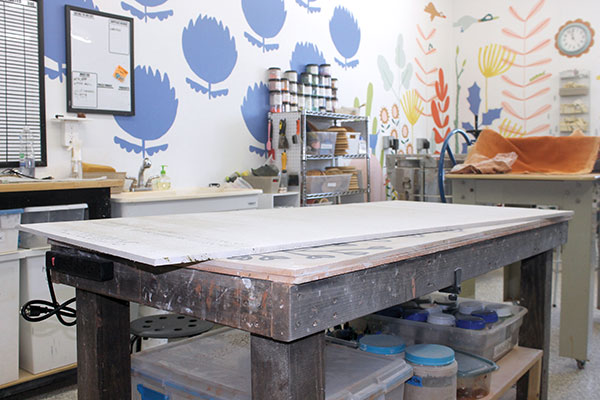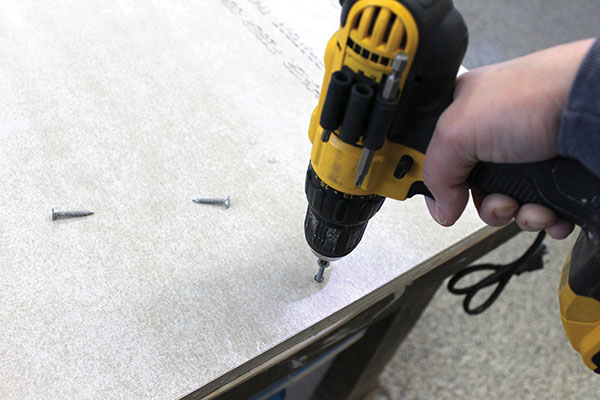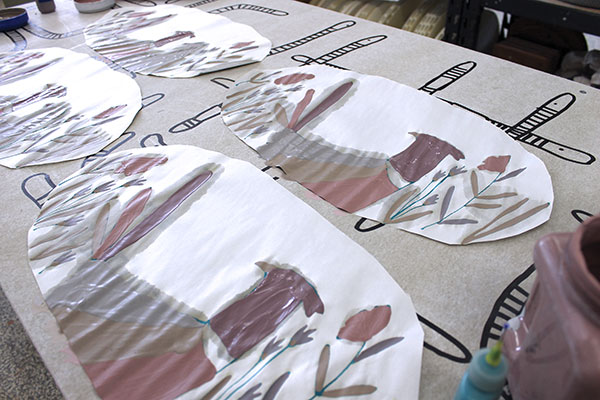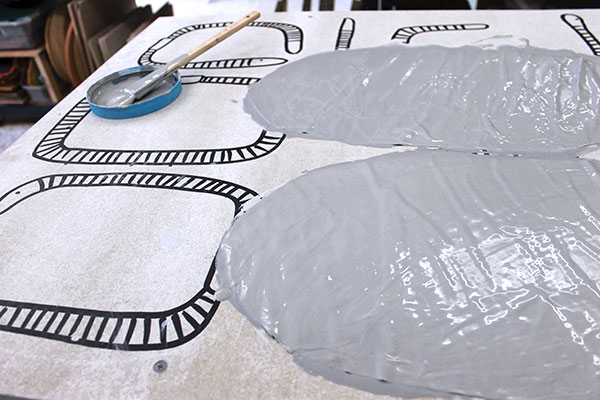

I’ve noticed that a common question asked of demonstrating artists during our Workshop from Home webinars is “what is your table surface made of?”. So today, I thought I would share Catie Miller’s article from the
Ceramics Monthly archive.
The great thing about Catie’s work surface solution is that it is readily available and inexpensive! I also love her trick for keeping the surface clean!

Cement board, meet clay artist. Clay artist, meet cement board. This is going to be your new best friend.
Advantages
Cement board is a great material to use in the studio for many reasons. First, it is inexpensive at $10–15 for a 3×5-foot sheet and can be found at most hardware stores. Second, it’s low maintenance. It doesn’t need to be sealed like wood and it is very durable. It holds up to all the moisture from clay and cleaning because it’s designed to be used as an underlayment for showers and tile work. It is easy to clean with a sponge and it doesn’t collect dust like canvas. The surface of the board is smooth on one side and slightly rougher on the opposite side.

The material is a cement composition. It does not have a layer of paper like drywall, just a semi-porous surface that withstands moisture very well. Every couple of years, when the surface of the table top is overly marred up, I just replace it with another sheet of cement board. To install the board, I drill holes and use cement screws. The board is somewhat brittle, so do not over tighten the screws or cracking could occur. Third, it is versatile. In my studio, I use cement board as table-top surfaces, shelving boards, and ware boards. The cement board is designed to score and snap with 2–3 heavy passes with a utility knife. You can also use a circular saw to cut it, but it will dull your blade very quickly and create a lot of dust. If cutting with a circular saw, cut it outdoors while wearing a respirator
Note: I use and prefer HardieBacker 500 cement board (see 2) in the 0.42-inch thickness. I’ve only ever found it in the 3×5-foot dimension, but according to the manufacturer, it also comes in a 4×8-foot size. HardieBacker also just developed a more water-resistant cement board called HardieBacker Cement Board with HydroDefense Technology. This board looks, feels, and costs nearly the same but repels water as if the surface is coated with a sealer. I’d caution against this new waterproofing board if you are using the surface with clay. Having some water absorption like with the HardieBacker 500 is helpful.


Put to Work
For handbuilding with slabs, the cement board sucks the extra water out of the clay, giving the slab a skin to provide strength. For my own work, the table surface pulls moisture out of the slip transfers I create, helping them dry faster, which speeds up my decorating process. I also like to put freshly thrown pots on the cement ware boards. After a few hours, the thrown pots release from the boards much like they do from a plaster bat. This prevents the need for using newsprint to separate pots from the ware board.
The other advantage to using cement board versus drywall as ware boards is you don’t have to worry about the paper degrading, taping the edge, or potential plaster contamination of your clay. If the edges of the cement board are too sharp, you can
lightly sand them down.




Finally, I’ll share my trick to keeping my table clean: I draw on it! Not only does the decorated surface provide a great backdrop for all of my social-media posts, but it also tricks my mind into keeping it clean so I can see the drawings more clearly. I use a Sharpie Paint Pen to mark up the surface.
the author Catie Miller is a studio potter living and working in Fargo, North Dakota. She continues to work within the art community, teach workshops, embrace motherhood, and relax with her husband and small dog. To see more of her work, visit
www.catiemillerceramics.com and follow her on Instagram @catiemillerceramics.






